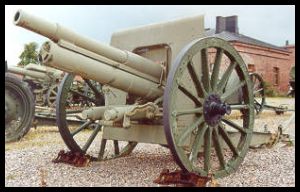|
|
||||||||||||||||||||||||||||||||||||||||||||||||||||||||||||||||||||||||||||||||||||||||||||||||||||||||||||||||||||||||||||||||||||||||||||||||||||||||||||||||||||||||||||||||||||||||||||||||||||||||||||||||||||||||||||||||||||||||||||||||||||||||||||||||||
 |
||||||||||||||||||||||||||||||||||||||||||||||||||||||||||||||||||||||||||||||||||||||||||||||||||||||||||||||||||||||||||||||||||||||||||||||||||||||||||||||||||||||||||||||||||||||||||||||||||||||||||||||||||||||||||||||||||||||||||||||||||||||||||||||||||
| By Lasse Jensen |
Last updated 18 April 2002 |
|||||||||||||||||||||||||||||||||||||||||||||||||||||||||||||||||||||||||||||||||||||||||||||||||||||||||||||||||||||||||||||||||||||||||||||||||||||||||||||||||||||||||||||||||||||||||||||||||||||||||||||||||||||||||||||||||||||||||||||||||||||||||||||||||
 76.2mm Pushka obr. 1902/30 g L/30
76.2mm Pushka obr. 1902/30 g L/30
|
||||||||||||||||||||||||||||||||||||||||||||||||||||||||||||||||||||||||||||||||||||||||||||||||||||||||||||||||||||||||||||||||||||||||||||||||||||||||||||||||||||||||||||||||||||||||||||||||||||||||||||||||||||||||||||||||||||||||||||||||||||||||||||||||||
|
||||||||||||||||||||||||||||||||||||||||||||||||||||||||||||||||||||||||||||||||||||||||||||||||||||||||||||||||||||||||||||||||||||||||||||||||||||||||||||||||||||||||||||||||||||||||||||||||||||||||||||||||||||||||||||||||||||||||||||||||||||||||||||||||||
|
|
||||||||||||||||||||||||||||||||||||||||||||||||||||||||||||||||||||||||||||||||||||||||||||||||||||||||||||||||||||||||||||||||||||||||||||||||||||||||||||||||||||||||||||||||||||||||||||||||||||||||||||||||||||||||||||||||||||||||||||||||||||||||||||||||||
|
In the mid-1920's, the Red Army High Command
decided to modernize the existing 76.2 mm Gun Model 1902 - the most famous
and one of the best Russian three-inch field guns. The main goal was to
increase the range of the gun, but the technical standards of the Soviet
High Command were poor at that time. Poorly educated, M. Tukhachevsky was
Deputy Minister (zam. narkoma) of Weapons; and I. Pavlunovsky, who had no
education at all, was Deputy Minister of Heavy Machine Building. These two
men proposed many weak and opposite schemes, and ordered that they be
carried out. They knew nothing about artillery and its problems. Obviously, if the caliber of a gun is changed, not only will the range be increased, but also the charge must be raised by a great margin (up to a power of three!). Unfortunately, this was not obvious to Tukhachevsky and Pavlunovsky. They decided to increase the range of the 3-in gun without changing its caliber (and thus its projectile and cartridge). How was that to be accomplished? Of course, the cartridge of the original 3-inch gun was developed with some reserve capacity, thus the propellant charge could be increased from 0.9 kg to 1.08 kg. Furthermore, the projectile's aerodynamic properties were improved, and the maximum elevation angle of the gun was increased. The last scheme was to increase the barrel's length from 30 calibers to 40 or even 50 calibers. In fact, the range increased little while the gun's weight and length increased considerably and, as a result, the gun's maneuverability and acceptability decreased significantly. Until the end of 1937, the modernized 76.2 mm Gun Model 1902/30 was in mass production. The 76.2 mm Gun Model 1902/30 used the same ammunition as the 76.2mm obr 1927. Finnish forces captured 32 guns of this type during the Winter War. |
||||||||||||||||||||||||||||||||||||||||||||||||||||||||||||||||||||||||||||||||||||||||||||||||||||||||||||||||||||||||||||||||||||||||||||||||||||||||||||||||||||||||||||||||||||||||||||||||||||||||||||||||||||||||||||||||||||||||||||||||||||||||||||||||||
|
|
||||||||||||||||||||||||||||||||||||||||||||||||||||||||||||||||||||||||||||||||||||||||||||||||||||||||||||||||||||||||||||||||||||||||||||||||||||||||||||||||||||||||||||||||||||||||||||||||||||||||||||||||||||||||||||||||||||||||||||||||||||||||||||||||||
|
|
||||||||||||||||||||||||||||||||||||||||||||||||||||||||||||||||||||||||||||||||||||||||||||||||||||||||||||||||||||||||||||||||||||||||||||||||||||||||||||||||||||||||||||||||||||||||||||||||||||||||||||||||||||||||||||||||||||||||||||||||||||||||||||||||||
|
References: Russian Battlefield JED Military Enthusiasts Directory Additional web resources. Various web notes. |
||||||||||||||||||||||||||||||||||||||||||||||||||||||||||||||||||||||||||||||||||||||||||||||||||||||||||||||||||||||||||||||||||||||||||||||||||||||||||||||||||||||||||||||||||||||||||||||||||||||||||||||||||||||||||||||||||||||||||||||||||||||||||||||||||
|
|
||||||||||||||||||||||||||||||||||||||||||||||||||||||||||||||||||||||||||||||||||||||||||||||||||||||||||||||||||||||||||||||||||||||||||||||||||||||||||||||||||||||||||||||||||||||||||||||||||||||||||||||||||||||||||||||||||||||||||||||||||||||||||||||||||
|
All pages and Graphic on Builders Paradise are copyrighted (c) by LHJWORLD (TM) 2002 |
||||||||||||||||||||||||||||||||||||||||||||||||||||||||||||||||||||||||||||||||||||||||||||||||||||||||||||||||||||||||||||||||||||||||||||||||||||||||||||||||||||||||||||||||||||||||||||||||||||||||||||||||||||||||||||||||||||||||||||||||||||||||||||||||||
